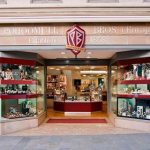This article is the second in a two-part series. Read the first part here.
Operation Guardian Prosperity, a multi-nation naval task force is actively patrolling the narrow waterways of the Suez Canal and the Red Sea. Since 11 January it has targeted the drone and missile launch sites of the Iran-backed Houthis of Yemen. Since November 19, there have been 30 Houthi attacks[1] on commercial shipping on this route, resulting in a steep hike in marine insurance and freight costs. India is not a part of this task force but its naval warships are patrolling the seas off the Horn of Africa[2] to tackle a parallel resurgence in Somali piracy triggered by these attacks.[3] This has yet again highlighted the vulnerability of ships transiting the Suez Canal waterway and the Red Sea.
Yet, the French-built Suez Canal continues to be the busiest route between Europe and Asia since it was opened in 1869. A large amount of world trade – 12%-15% – transits annually through the Canal, flagging its importance to the world economy.[4] Egypt’s historic centrality to this vital maritime trade corridor is well known but that of Bombay city and its Presidency are not.
In the 19th century the Presidency of Bombay[5], its ports, and its merchant communities, especially traders from its Province of Sindh[6] known as Bhaiband Sindhis or Sindworkies, helped to establish and develop the Red Sea-Suez trade route. It was critical to the prosperity of Bombay city and its Presidency because it reduced the voyage from Portsmouth or Southampton to Bombay to 30 days from the four months it took via the Cape of Good Hope. The focus 200 years ago was to shift to an all-sea route from an existing part-sea and overland route via the Gulf port of Basra, then overland to reach eastern Mediterranean shores – the precursor to the current India-Middle East-Europe Economic Corridor (IMEC). There were two considerations then in securing the Suez-Red Sea shortcut to connect the Indian Ocean with the Mediterranean. One, ships were economical bulk carriers of goods. Two, transit through land at that time was always fraught with more dangers from tribal uprisings and corrupt local officials.
This made it imperative for the English East India Company (EEIC), like its predecessors the Portuguese[7] and the Dutch, to secure ports along busy trade routes. In 1835, the English acquired the Port of Aden and its surrounding area and made it part of the Presidency of Bombay. Soon after in 1839, the EEIC secured Karachi harbour, and in 1842 it did the same with what came to be known as Sindh Province with its capital city Hyderabad, from the Talpur Amirs[8]. These territories became part of Bombay Presidency.
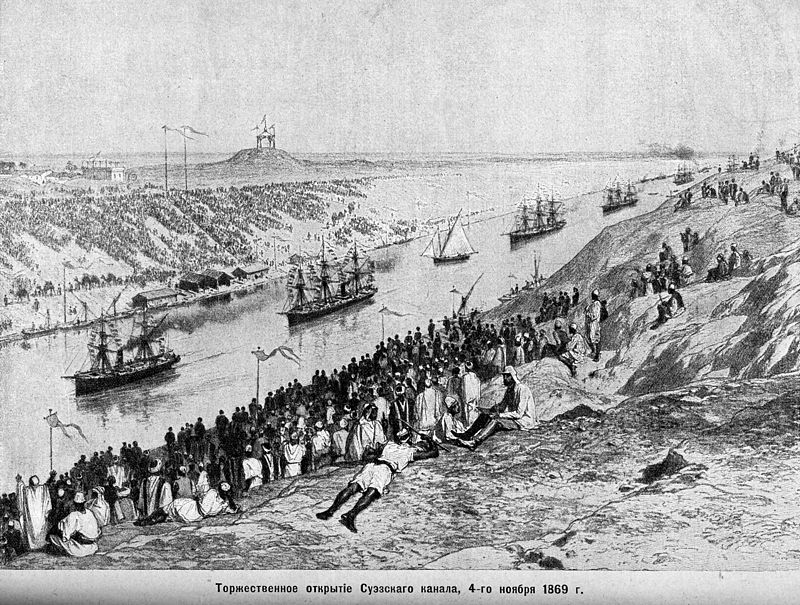
Egypt with its ports of Suez at the southern end of the Isthmus of Suez on the Red Sea, and Alexandria on the southern Mediterranean shores, was brought under the British sphere of influence due to a weak, indebted, and hence pliable Ottoman Empire, which Egypt was then a part of. There were two experiments run by the Royal Indian Navy, and an enterprising Englishman, from Bombay before the Suez Canal was built to test the viability of the Suez-Red Sea route, whose overland stretch from Suez to Cairo to Alexandria lent itself to tourism – the Great Sphinx and the pyramids at Giza[9].
An early test run in 1829 was made by the first steam-powered ship, the 411-ton Hugh Lindsay, built in Bombay’s naval dockyards. Although this paddle ship was hopelessly underpowered, it clocked 32 days 16 hours from Bombay to Suez, and on its return journey 33 days. It began the Bombay-Suez mail package run for the EEIC naval ships, including the Hugh Lindsay, which soon became a scheduled monthly service.[10] The second experiment later the same year was led by the British adventurer Lieutenant Thomas Fletcher Waghorn, who carried the mail overland starting in London on 28 October, cutting across Europe to arrive at Trieste, Italy[11], then crossing the Mediterranean to Alexandria, Egypt, and finally overland to Suez to meet the Indian navy ship Enterprise on 8 December.[12]
According to the French traveler Victor Fontainier in his travelogue Voyage Dans l’Inde Et Dans Le Golfe Persique Par l’Égypte Et La Mer Rouge (1844), the enterprising Waghorn opened hotels in Suez and Cairo for ship passengers and provided caravan transport across the desert. These passengers and later tourist arrivals attracted souvenir and curio peddlers and shopkeepers who were Jews, Armenians, Lebanese, and Sindhis. The latter came from the faraway Bombay Presidency.

Grasping the import of these events was the Pohoomull family from Hyderabad, Sindh, which made Egypt its first overseas headquarters. According to Narender Pohoomull, his great-grandfather Sahijram established the first Egypt Pohoomull Brothers shop in Luxor in 1858. Sahijram and his six brothers whose traditional family business was that of grain merchants, saw the opportunity to diversify overseas. Their first shop was established in 1847 in British-controlled Aden where they sold Indian handicrafts, exotic silks, and the famous embroideries of Sindh. But the lure of Egypt was great, and they moved to Luxor ten years later, with their products. “Cairo was the place, not only Cairo but entire Egypt. We had shops in Alexandria, Port Said, Suez, and Luxor,” says Pohoomull, a fourth-generation descendant of the Pohoomull Brothers transnational business family. According to historian Claude Markovits, Egypt had the first substantial presence of Sindworki merchants and their staff before they expanded westward and eastward across all the world’s free ports.[13] In the case of Egypt, these were Alexandria, the new Port Said[14], and Suez. The reason for this, says Pohoomull, was that they concentrated on ports which were “duty-free, price competitive, and touristy.”[15]
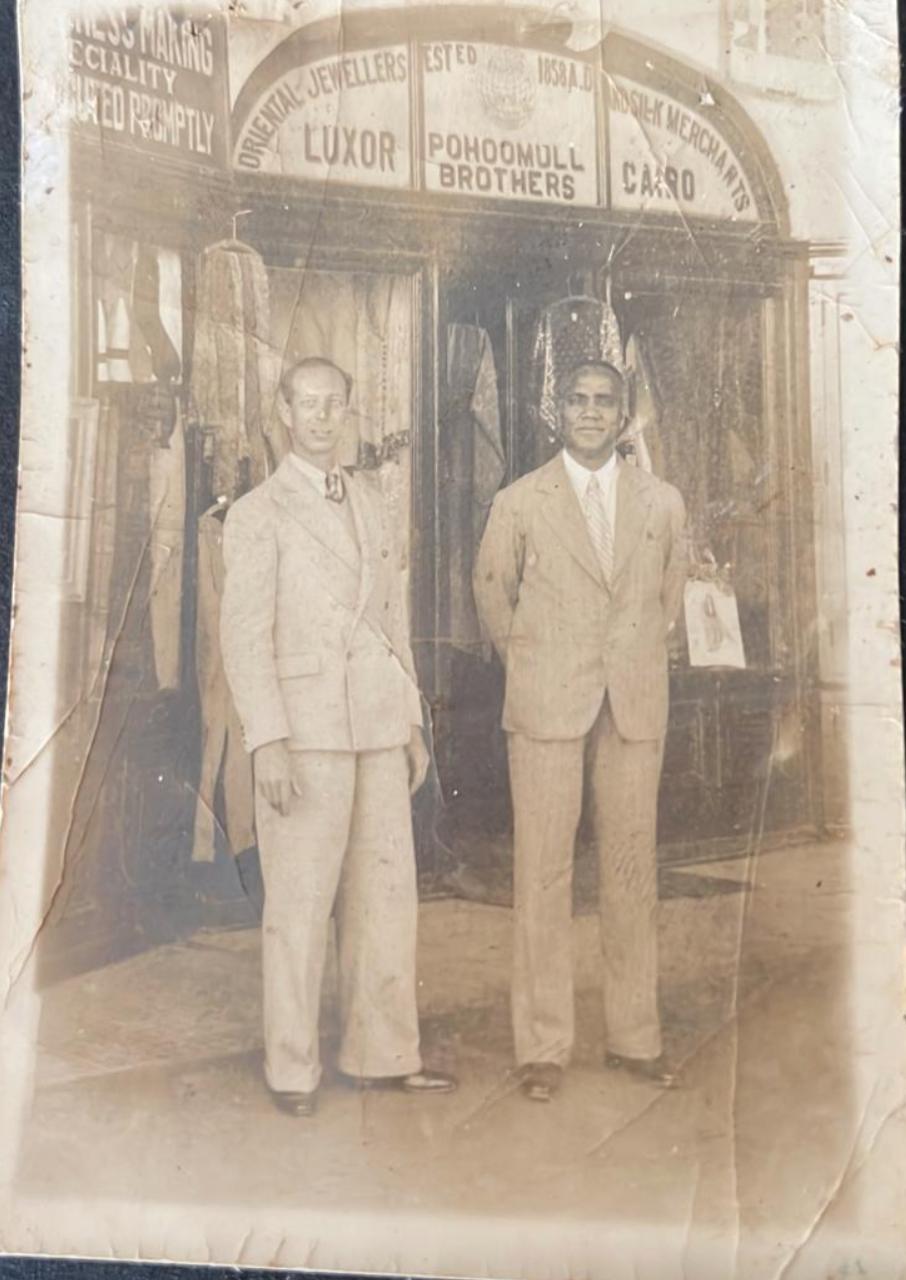
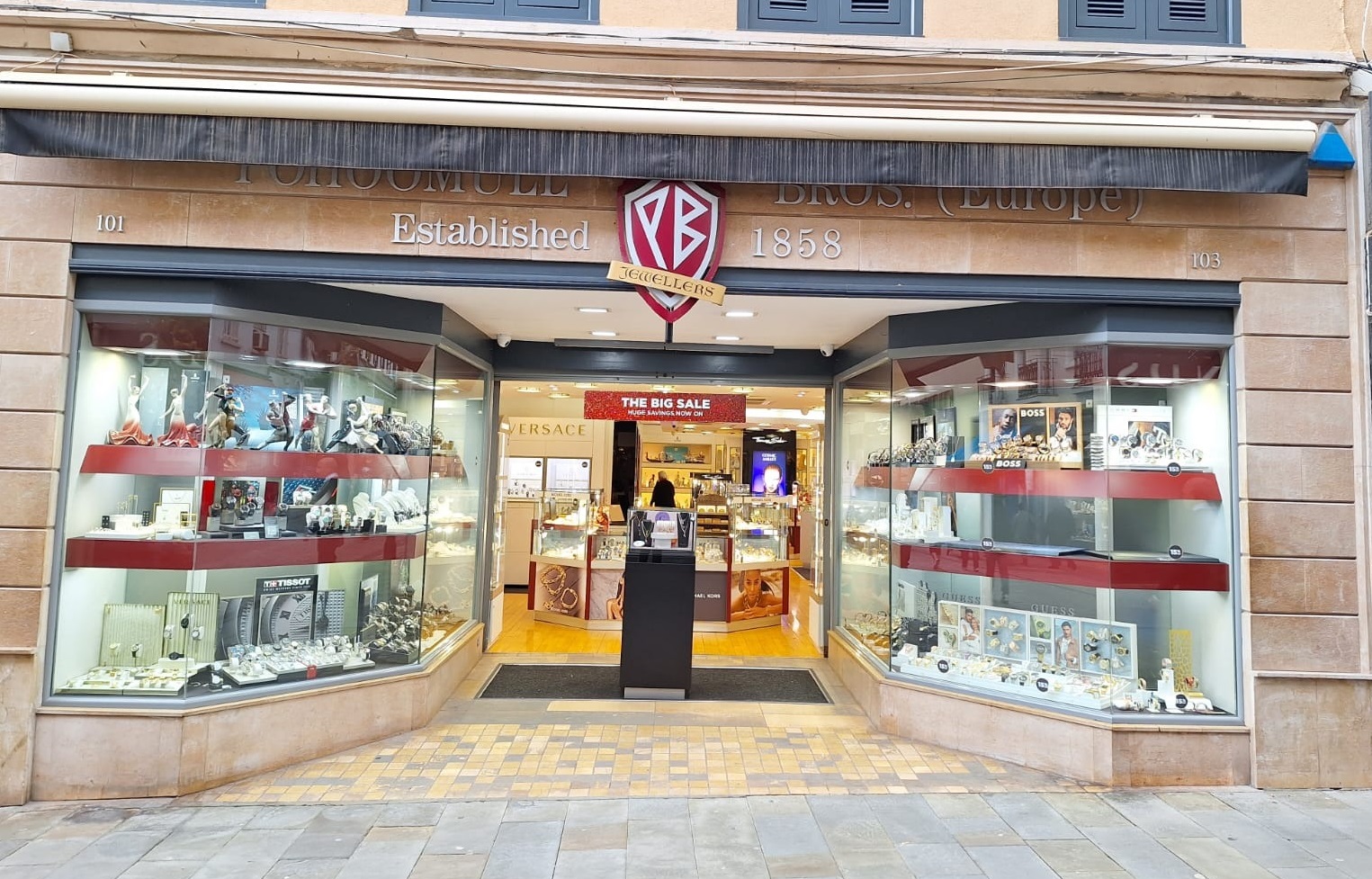
In Egypt, the shops were specifically named ‘Pohoomull Brothers Oriental Jewellers and Silk Merchants’ (see photo) as their main line of business was not curios but precious stones, jewelry, expensive silks, and then handicrafts, both the latter largely sourced from India. During the reign of King Farouk (Fuad II) of Egypt, Pohoomull Brothers were appointed royal jewellers to the monarch. In keeping with their luxury brand status, their two Cairo shops were in the upscale Shepheard’s and Semiramis hotels.
The opening of the Suez Canal[16] and the beginning of guided group tours to Egypt by Thomas Cook & Son[17], both of which began in 1869, combined with the seamless movement of goods, credit, information, and people through the colonial network of ports, making it viable to run an empire like that of the Pohoomulls.[18]At their peak, the business stretched across 20 port cities of the continents of Asia, Africa, Europe, and North and Central America.[19]
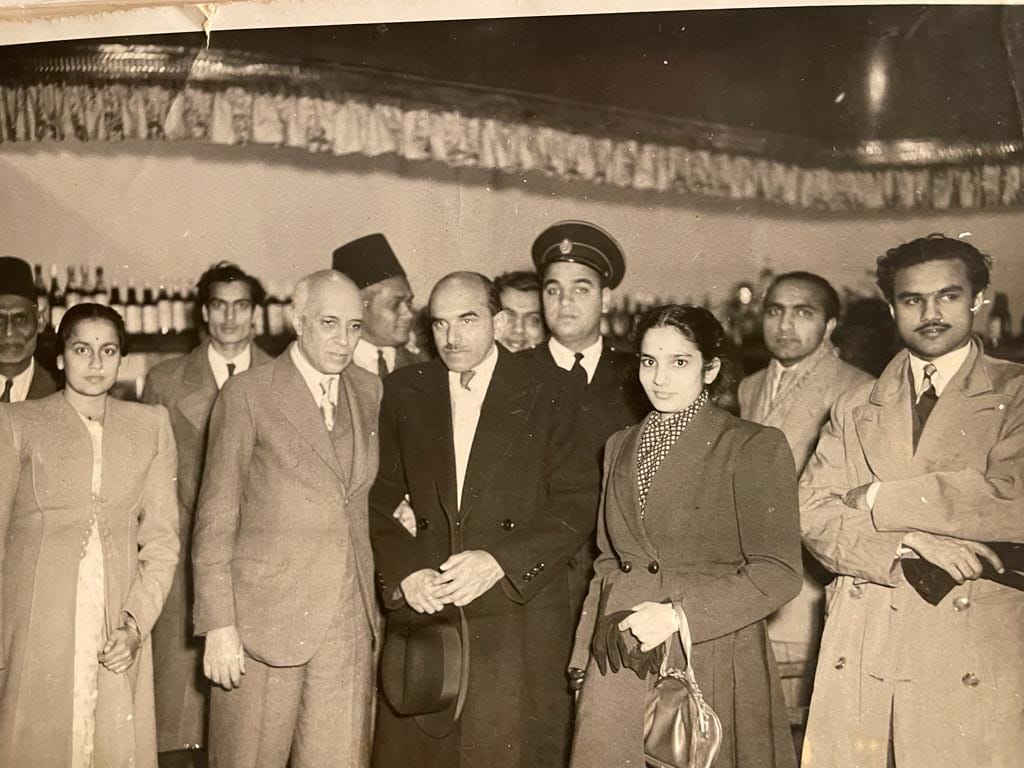
By the early 20th century, Bombay city had become the headquarters of this vast network, as it was for most Sindworki transnational businesses. Account books from every part of the world were brought to Bombay to be reconciled and profits distributed. “After India’s Partition in 1947 things began crumbling. Families had become too large, and there was the logistical problem of maintaining accounts as people could not travel to and from India as easily as they once did,” points out Pohoomull.[20] It was the end of European colonisation and the instatement of hard land borders and passports made movement difficult.[21]
Pohoomull, who was born in Cairo and studied there till the age of ten, recalls that his family enjoyed a good life in Egypt. The political instability in the aftermath of the Egyptian Revolution of 1952-53 prompted his family to relocate to nearby Beirut in 1967.[22] Egypt lost its allure as an important destination for Sindworki business. but it still has a sizeable presence of Sindhis, most being descendants of families that established or worked for these firms. This pattern is repeated in other former colonial ports and has made this Indian diaspora ubiquitous across the world.[23]
Despite the current conflict, Egypt will continue as a key player in the trade route between the Indian Ocean and the Mediterranean even if alternative routes to the Suez Canal-Red Sea are sought. One of these is the India-Middle East-Europe Economic Corridor (IMEC) or Turkey’s proposed transport corridor from Basra, Iraq, to Anatolia. The IMEC corridor plans a rail and road corridor through Saudi Arabia, Jordan, and Israel to connect to the Mediterranean, much like the old pre-Suez Canal land-sea routes. Having alternative and competing routes is important for securing global supply chains as the current war testifies but an all-sea passage history shows will always be the most price competitive.
Sifra Lentin is Fellow, Bombay History, Gateway House
This article was exclusively written for Gateway House: Indian Council on Global Relations. You can read more exclusive content here
Support our work here.
For permission to republish, please contact outreach@gatewayhouse.in
©Copyright 2024 Gateway House: Indian Council on Global Relations. All rights reserved. Any unauthorised copying or reproduction is strictly prohibited.
References
[1] The latest number available of ships attacked by the Houthis is only till 2 February 2024. See https://www.reuters.com/graphics/ISRAEL-PALESTINIANS/SHIPPING-ARMS/lgvdnngeyvo/
[2] Operation Prosperity Guardian has concentrated naval assets and command-and-control bandwidth on the Bab el-Mandeb Strait, wedged between the Horn of Africa and the southwestern corner of the Arabian Peninsula. It is a key choke point for commercial traffic tran siting between the Arabian Sea and the Red Sea towards the Suez Canal—another choke point. Indian Naval vessels are largely patrolling in the open seas outside the Bab-el-Mandab Strait.
[3] Last week an Iranian fishing vessel with a mixed crew of 11 Iranians and 9 Pakistanis were hijacked by 7 pirates, the boat and its crew were rescued by Indian Naval Ship (INS) Sharda. Earlier on 26 January, INS Visakhapatnam, a guided missile destroyer, responded to a distress call by UK merchant vessel MV Merlin Luanda then located in the Gulf of Aden which caught fire after an attack by the Houthis. Two weeks earlier the Indian Navy rescued the crew members of a Liberian-flagged ship that had been hijacked by pirates.
[4] See United Nations Conference on Trade and Development’s (UNCTAD) latest report of 26 January 2024 that additionally states that trade volume through the Suez Canal has dropped by 42% in the last two months i.e., December 2023 and January 2024. See:
[5] The Presidency of Bombay in the 1840s included the port of Aden and parts of the hinterland around it, Pakistan’s Sindh province, and the Indian states of Gujarat, Maharashtra, and parts of Karnataka.
[6] From 1843 to 1936, Sindh was a part of the Presidency of Bombay.
[7] See Gateway House article https://www.gatewayhouse.in/portuguese-string-of-ports/
[8] Talpur is a Sindhi Baloch tribe. The tribe later formed the Talpur Dynasty. They are mainly settled in undivided India’s Sindh, Punjab and Balochistan. The Talpur dynasty ruled Sindh between 1783 and 1843, while a branch of the dynasty ruled until 1955 as the Khairpur princely state in Upper Sindh.
[9] Today Giza is part of the metropolitan city of Cairo.
[10] From 1840 the Royal Chartered Peninsular & Oriental Steam Navigation Company (P&O SNC) was entrusted with the mail service and the port of Bombay continued as the main port for receipt, disbursal, and sending of international mail. This was before the Suez Canal was opened in 1869.
[11] Trieste was a part of the Austrian Empire in 1829.
[12] Waghorn’s entire journey with unforeseen delays took him four months and 21 days from London to Bombay. He arrived in Bombay with his mail packet on 20 March 1830.
[13] Markovits, Claude, The Global World Of Indian Merchants 1750-1947: Traders of Sind from Bukhara to Panama (Cambridge, Cambridge University Press, 2000) pp. 30, 117, 121 (Endnotes 19, 20)
[14] Port Said was built at the Mediterranean entry into the Suez Canal. The ports of Alexandria and Suez are both old port cities.
[15] The Gibraltar shop of Pohoomull & Bros is the only branch still in existence and is run by a cousin sister of Narender Pohoomull. It was originally established by Moolchand Pohoomull, then run by his son Chandanmal, followed by his grandson Lachu, and today his great-granddaughter Renuka Nandwani.
It must be noted that the original surname of the Pohoomull family is Khiani. They established their overseas businesses and adopted the name Pohoomull, the name of one of the seven pioneering brothers, only after they ventured overseas.
[16] In 1854 Frenchman Ferdinand de Lesseps received an Act of Concession from the Viceroy (Khedive) of Egypt, Sa’id Pasha to construct a canal, and in 1856 a second act conferred on the Suez Canal Company (Compagnie Universelle du Canal Maritime de Suez) the right to operate a maritime canal for 99 years after completion of the work. See https://www.britannica.com/topic/Suez-Canal/History
[17] The original name was simply ‘Thomas Cook’ but in 1871 when John Cook, the founder’s son, was made partner the name was changed to ‘Thomas Cook & Son’.
[18] There were numerous other transnational Sindhi families like the D. Chellaram, M. Dialdas, J.T. Chainrai, Wassiamull Assomull, and Chotirmal, who built their businesses on this model. The 1930s or the inter-war years saw these family businesses at their peak.
[19][19] The list of cities where Pohoomull business operations were located are: Beira port (Mozambique): Cairo, Luxor and the ports of Alexandria, Suez and Said in Egypt; Malta port, Tripoli port (Algeria), Gibraltar (UK), Morocco, Tenerife (Canary Is. Spain), Colon (Panama) the ports of Shanghai, Hong Kong and Canton (China), Karachi, Bombay, Calcutta in British India, Yokohama and Kobe ports in Japan, Kuala Lumpur (Malaysia), Batavia or Jakarta (Indonesia), Saigon and Cho Lon (now Ho Chi Minh City, Vietnam), and Manila in Philippines.
[20]The original Pohoomull Brothers firm was dissolved by an arbitration award of 10 September 1931 and its businesses and assets were distributed among five brothers and their families. Soon after this dissolution three of the brothers partnered forming their own Pohoomull Brothers firm.
[21] The Province of Sindh became part of Pakistan after the Partition of India in 1947. This resulted in wives and families joining their menfolk overseas. For more details on this see https://www.gatewayhouse.in/bombay-karachi-linked/
[22] Pohoomull Brothers shut their Egypt operations in 1970, the year when Narender’s uncle who was looking after the Egypt business passed away.
[23] See Indians in Egypt: Reviving Connectivity. The Hong Kong-based firm of H. Daya International established a branch in Port Said as late as 1976 a year after the Egyptians reopened the Suez Canal which had been closed since the Six-Day War with Israel in 1967.


